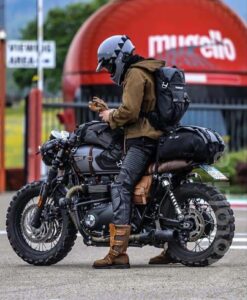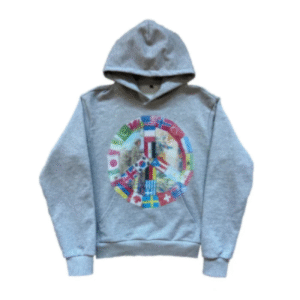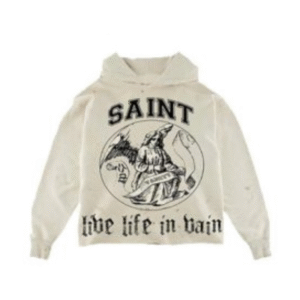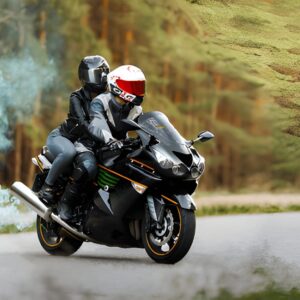Riding a motorcycle is an experience that blends freedom, focus, and connection with the road and machine. Yet, the physical demands of riding, especially over long distances or through complex urban environments, can take a toll on the rider’s body—most notably on the feet and legs. This is where the importance of motorcycle riding boots with a thoughtful ergonomic design becomes pivotal. Boots that support, cushion, and adapt to the rider’s movements don’t just protect—they reduce fatigue, enhance comfort, and foster a deeper sense of confidence in every journey.

Understanding the role ergonomic boots play isn’t just a matter of technical specifications or style preferences. It touches upon the emotional and practical layers of how riders connect with their gear, how family traditions around gifting develop, and how thoughtful choices extend care for loved ones on two wheels.
What Is Ergonomic Design in Motorcycle Boots?
Ergonomic design refers to shaping products to fit the natural form and movement of the human body, thereby minimizing strain and maximizing comfort. When applied to motorcycle riding boots, it means creating footwear that:
- Supports the foot’s natural arches and contours,
- Allows easy and controlled ankle movement,
- Distributes pressure evenly across the foot,
- Includes cushioning that reduces shock from road vibrations,
- Keeps the foot stable yet flexible for riding dynamics.
Such boots don’t force the feet into awkward positions or create hotspots that lead to pain or discomfort. Instead, they become an extension of the rider, enabling smoother control and less exhaustion.
Why Rider Fatigue Matters More Than We Often Realize
Fatigue is more than feeling tired; for motorcyclists, it’s a risk factor that affects concentration, reaction times, and overall safety. Many riders underestimate how much cumulative foot and leg strain diminishes endurance. After hours on the bike, poor boot design can lead to aches, numbness, and even long-term joint problems.
Reducing fatigue means prolonging the joy and control of riding—whether it’s a daily commute, weekend ride with friends, or a multi-day adventure. For families gifting boots, especially between parents and children, emphasizing comfort and ergonomic fit is an act of love and protective insight. It shows concern for well-being beyond surface-level appearances.
Key Ergonomic Features That Make a Difference
When choosing boots that reduce fatigue, looking beyond looks and initial comfort is crucial. Here are some key ergonomic aspects to consider:
Arch and Heel Support
A boot’s insole and midsole should offer strong arch support that matches the wearer’s foot shape. This prevents foot flattening and distributes weight correctly. A well-designed heel cup stabilizes the foot during shifts and turns, reducing strain on ankles and calves.
Flexible Ankle Construction
Riding requires precise use of ankle muscles for balancing, shifting gears, and operating levers. Boots with rigid ankles often hinder fluid movement, causing muscle fatigue. Ergonomically designed boots use strategic reinforcements that protect without overly constricting flexibility.
Shock-Absorbing Soles
Road vibrations are transmitted through the foot, leading to tiredness and discomfort. Boots with shock-absorbing soles made of modern cushioning materials dampen this impact. It’s subtle but results in less fatigue even on rough surfaces.
Breathability and Moisture Management
Foot comfort also relies on controlling moisture and heat. Boots incorporating breathable membranes or moisture-wicking linings help maintain a comfortable microclimate inside. This prevents overheating and discomfort that can compound riding fatigue.
Weight and Balance
Lightweight boots reduce energy spent in moving the feet but must maintain enough weight for stability. Properly balanced weight distribution enhances control, reducing the energy drain caused by awkward or heavy footwear.
Emotional and Practical Value in Gifting Ergonomic Boots
When considering a gift—especially for a son or younger family member stepping into motorcycling—the choice of comfortable, ergonomic boots carries layers of emotion and trust. It says:
- “I know riding can be demanding, so I want you to be comfortable and safe.”
- “I’m passing on something I’ve learned or valued from experience.”
- “Your health and enjoyment matter to me beyond just the activity.”
- “Here’s something that will support you literally and figuratively on the road.”
These messages strengthen relationships by combining pragmatism with empathy. Recognizing that feet endure much of the ride’s stress enriches the significance of boots as gifts.
Ergonomics and Rider Performance: A Closer Look
The connection between better boots and improved riding isn’t just theoretical. Ergonomic boots enhance functional aspects like:
- Balance and Stability: A well-fitted boot supports foot placement and grip on the pegs, helping riders maintain posture and avoid slips or sudden adjustments.
- Gear Shifts: Flexibility and responsive sole thickness aid smoother gear shifting without needing to reposition or strain the ankle.
- Brake Control: Stability in heel and sole design offers precise brake application, critical in emergencies or tight controls.
Together, these reduce micro-movements and compensations that exhaust muscles quickly. When the rider feels supported, the entire experience becomes more fluid and less draining.
Recognizing the Signs of Fatigue and Its Impact
Understanding fatigue’s subtle manifestations can help riders choose better boots and care for their bodies:
- Foot Numbness or Tingling: Indicates poor circulation or nerve pressure, often worsened by inadequate boot shape or fit.
- Ankle Pain or Stiffness: May result from overly rigid boots or lack of proper support.
- Lower Leg Soreness: Caused by muscle overuse to compensate for poor boot stability.
- General Tiredness After Short Rides: Can signal that boots are not supporting the foot properly.
Addressing these early with ergonomic boots prevents worsening discomfort or injuries and encourages longer, safer rides.
Materials and Construction That Enhance Ergonomics
The quality of materials and craftsmanship directly impacts ergonomic effectiveness. Consider:
- High-Grade Leather or Synthetic Uppers: Allow the boot to mold gently over time to the foot, increasing personalized comfort.
- Integrated Shanks or Plates: Provide torsional rigidity without sacrificing necessary foot flexibility.
- Soft, Padded Collars: Cushion the ankle area, reducing chafing and supporting movement.
- Contoured Insoles and Removable Footbeds: Offer customization and replacement options to suit individual needs.
Such construction choices underline the value of investing in boots that serve the rider’s body proactively.
Practical Tips for Finding the Perfect Ergonomic Boots
Selecting boots with ergonomics in mind requires careful thought. Some advice includes:
- Try Boots On With Riding Socks: This replicates real use conditions for accurate fitting.
- Walk and Simulate Riding Stances: Check for ankle movement and sole grip feel.
- Ask About Support Features: Learn about insoles, cushioning, and materials used.
- Consider Break-In Period: High-quality boots will adapt but should feel comfortable early on.
- Reflect on Riding Style: Different styles (touring, urban, off-road) subtly influence ergonomic needs.
For gifting, consulting the recipient or sharing those insights can make the choice both practical and heartfelt.
How Ergonomic Boots Influence Long-Term Rider Health
Beyond immediate comfort, ergonomic boots contribute to sustained musculoskeletal health. Good foot and ankle alignment reduces:
- Joint wear and tear,
- Risk of chronic pain,
- Lower limb fatigue impacts riding stamina.
This helps riders pursue their passion with fewer physical barriers over time, making boots a wise consideration not just for now but for the future.
Stories of Connection Through Boots
The value of ergonomic boots is often best told through relatable stories. Imagine a father who once struggled with fatigue on long rides, knowing the pain it brought. When buying boots for his son, he chooses an ergonomic pair, sharing quietly that “these will keep you going longer and feeling better.” The son appreciates the meaning behind the choice far more than just the boot’s look or brand.
Or a friend gifting boots to another rider starting to log more miles, emphasizing comfort and support over flashiness—a genuine nod to their evolving relationship with motorcycling and their body.
These moments transform boots from mere gear to tokens of understanding and care.
Balancing Style and Ergonomics: It’s Possible
Often, people think ergonomic boots sacrifice style. Modern designs prove otherwise: boots now marry form and function with streamlined looks, classic leather finishes, and subtle detailing.
For riders who value both comfort and appearance, these boots affirm that practical doesn’t mean plain. This blend increases the likelihood that owners wear them regularly, keeping fatigue at bay and safety prioritized.
Maintenance Matters Too
Ergonomics isn’t just about initial design; maintaining boots ensures ongoing support. Regular cleaning, conditioning leather, and replacing insoles when worn preserve ergonomic benefits. Gifting this knowledge enhances the overall experience, reinforcing a shared culture of care and respect for riding equipment.
Thoughtfully selected motorcycle riding boots with ergonomic design are more than protective gear they are trusted companions that reduce rider fatigue, increase comfort, and contribute to safer, more enjoyable rides. Whether buying for yourself or gifting to someone special, recognizing the power of well-designed boots enriches the journey every step of the way.








